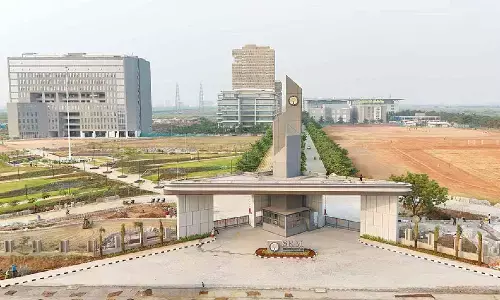Cherrapunjee, wettest place turns dry

Cherrapunjee(renamed Sohra), Wettest Place Turns Dry. The year 2013 was one of the driest in Cherrapunjee (renamed Sohra) -- known as one of the wettest places on the earth -- in Meghalaya compared to the last 35 years.
Sohra (Meghalaya): The year 2013 was one of the driest in Cherrapunjee (renamed Sohra) -- known as one of the wettest places on the earth -- in Meghalaya compared to the last 35 years.
Residents of the hilltop in northeastern India say their heavenly abode is hotter and drier than ever before - due to global warming.
“2013 was the third driest year in the history with Sohra receiving only 7560.3 mm of rainfall,” Vijay Kumar Singh, the meteorological official at Sohra, told IANS.

He said it was the driest year in the history of Sohra when it received a rainfall of only 6,807.2 mm followed by the second driest year of 1978 when there was 6,950.3 mm of rainfall.
Looking at last year's records, Singh said: “In 2013, June 9 received highest one day rainfall of 315.4 mm and among the 12 months of 2013, July received the maximum of 1,858.8 mm rainfall.”
This town records an average rainfall of 12,000 mm a year, with the maximum occurring over the southern slopes of the Khasi Hills. The highest recorded total annual rainfall was 24,555 mm in 1974.
Sohra is on the edge of a plateau on the southern slopes in the East Khasi Hills district.
Located 1,290 metres above sea level and 56 km from the state capital Shillong, it is known to receive the highest rainfall in the world.
"But that will never happen again though we still get much rain during the monsoon. Earlier, we got rains here even during the winter. That is not happening anymore," said Lastborn Kharkongor, a resident.
However, most residents blamed the degradation of the eco system, with trees felled at the hills for limestone mining and other purposes.
Although local factors have led to some of the environmental problems the area faces, including erosion during the wet years due to deforestation, the scientists are pointing to global causes for the fluctuation in rain.
"Fluctuation is not influenced by local factors, it is related to climate. The climate of the entire country is changing," Surendra Singh, an Indian geographer who has extensively examine the physical and hydrological elements of Sohra, told IANS.
Next Story




















